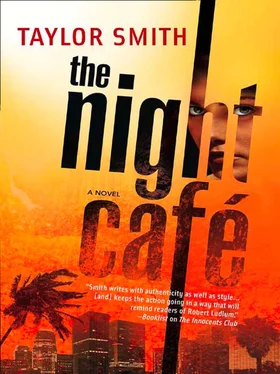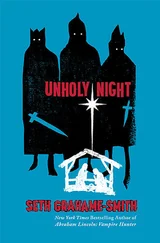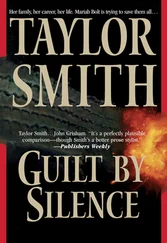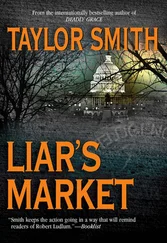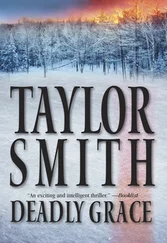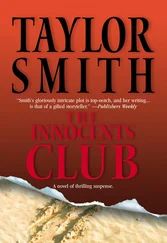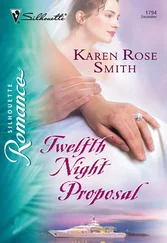He was deep in thought now. Setting the razor on the lip of the white porcelain hotel room sink, he took up the soap bowl and swirled his shaving brush round and round, each circuit of the bristles whispering the same refrain: Where, where, where was the bloody van Gogh?
The straight razor and boar bristle brush were old-fashioned things, but they were appropriate accessories for a man with such tall military bearing and a handle-bar mustache straight out of the days of Empire. Teagarden had spent thirty years as an officer of London’s Metropolitan Police, the last six and a half as head of the Yard’s Arts and Antiquities Unit. He’d been raised in Manchester, the only child of a decent but rough-about-the-edges mill worker father and a beautiful, cultured mother whose family had withdrawn after she married down. She had been stoic about her reduced circumstances, living on a drab council estate, never an extra shilling for travel or pretty things, but she had engendered in her son a love of music and art, taking him to every free gallery, concert and museum she could, exposing him to library books that described the wonders of the world. Little surprise, then, that given the opportunity to help recover some of the multimillions of pounds’ worth of art stolen annually, Teagarden had jumped at the chance.
As he soaped his cheeks, chin and neck, his memory skimmed the lists of stolen art documented in the British Art Loss Register and the New York–based IFAR, the International Foundation for Art Research. The number of masters alone sickened him—nearly three hundred Picassos, a couple of hundred Miros and Chagalls. Several Rembrandts. Manet, Munch, Vermeer, da Vinci, Goya—the list went on and on. And of course, there was the van Gogh.
Heading up the Arts Unit had not only capped his career at the Met, it had been his crowning achievement and the job of his dreams. He could happily have labored at it until his dying day, had he not been forced into retirement by bureaucrats. “Medically unfit for duty” after his second heart attack, they said, but that was bunk. The commander to whom he reported had been looking for a pretext to get rid of him. A diminutive micromanager with delusions of brilliance, the commander had transferred in from borough operations with a chip on his shoulder and lofty ambitions, and God help anyone he perceived as a threat to his aspirations. It had been annoying enough that Teagarden was impervious to his bullying management style, but the last straw had been a splashy Daily Mirror spread on the work of the Arts Unit, complete with of full color photos of Teagarden and some of the works he’d recovered—da Vinci’s priceless Virgin of the Rocks, a Brancusi sculpture, one of Degas’s ballerinas. “Unseemly,” the commander had sniffed. Of course, he never objected to any press piece that included a quote from him or a picture of his ugly mug, even in a rag like the Mirror.
Teagarden took up the razor and set to work on his face. He hadn’t given a damn about the press, but every time one of those puff pieces appeared, hits on the unit’s Web site had skyrocketed, as did tips from the public. No matter. Not long after the Mirror piece, the commander had ordered Teagarden to submit to a medical, then seized on the results to quote departmental policy at him and hustle him out the door. Within three months, the unit was downsized and swallowed whole by another section—a “redeployment of resources to higher priority tasks.”
It was a travesty, sidelining a specialist at the peak of his operational effectiveness, but Teagarden’s dismay had been short-lived. There were plenty of deep-pocketed private patrons who would pay extremely well, thank you very much, for the same investigative work that had netted him nothing more than a civil servant’s meager pension and a flipping here’s your hat, what’s your hurry shove out the door from the Met. He’d solved hard-to-crack cases during his tenure there and that reputation had served him in good stead, oiling hinges and opening doors at Interpol, the FBI and other international police agencies. They even referred clients to him when their own investigative resources were constrained. That was how Yale University, owners of The Night Café, had made contact. Teagarden had been on the trail of the painting since forty-eight hours after its New Year’s Day theft from the Arlen Hunter Museum.
These thefts were almost never carried out for the love of art. Faced with the possibility of discovery or arrest, thieves were more likely to destroy a painting than let it survive as evidence. With every day that passed, the risk grew exponentially that the fragile old canvas would be gravely damaged or lost forever.
The police in Los Angeles had been rather less welcoming, focused as they were on the murders that had accompanied the burglary. Teagarden, too, was appalled at the human tragedy, but as he tried to point out to the homicide detectives, the only way to find the killers was to learn who might have sought one masterpiece alone among the dozens that had been on view during the Madness & the Masterpiece exhibit.
Previous cases had taught him that the culprits often turned out to be petty thieves. Occasio facit furem—opportunity makes the thief, like a vagabond stealing laundry off a garden line. That was why so much stolen art was never recovered. As soon as the clothesliners felt the law breathing down their necks, they got rid of it. One thief’s mother, hoping to keep her precious boy out of prison, had actually taken her kitchen shears to dozens of the priceless masterworks her little bastard had nicked, and chucked several others into a nearby canal. It turned his stomach to remember the torn, water-damaged, charred and vermin-gnawed masterworks he’d seen.
The business of art theft had changed, however. In the past, a thief might hope to turn a quick profit through a ransom demand, but that was fraught with risk of capture. Finding a buyer these days was no easy matter, either. Recognizable works were impossible to sell to reputable collectors or dealers, even for pennies on the pound. In the old days, even if a buyer suspected a shaky provenance, he need only claim ignorance and wait out the clock. Once the legal statute of limitations had run out—five, seven, ten years, depending on the jurisdiction—thief and buyer alike were home free, and a lucrative payday might be worth the wait.
But these days, there was no pleading ignorance—not in an Internet age when the alarm was sounded far and wide for art gone walkabout. Many nations had also imposed stark penalties on trafficking in stolen work, and the publicity surrounding colonial plundering of antiquities and theft from Holocaust victims put intense pressure on buyers to err on the side of caution. When a California Getty Museum director went on trial in Italy for purchasing stolen antiquities, her ordeal did more than anything else to put the fear of the gods into buyers around the world.
So, Teagarden mused, if not for resale to some reclusive billionaire aficionado or corrupt broker, who else would be in the market for a sixty-million-dollar van Gogh? There was only one other likely scenario—someone wanted to use it as collateral for another business transaction. The drug trade, gunrunning, human smuggling and fraud were all interrelated, and a painting like The Night Café, more compact than a comparable amount of cash, could serve as useful security until funds could actually change hands on a shipment. The masterpiece as currency.
He scrutinized his face in the mirror, looking for spots he might have missed, but his mind was on the security tapes he’d studied at the Arlen Hunter. There was nothing opportunistic about that burglary. It had taken just under twelve minutes from start to finish. A review of the museum’s security setup had left no doubt in his mind that the theft had been carefully planned, possibly with inside help.
Читать дальше
